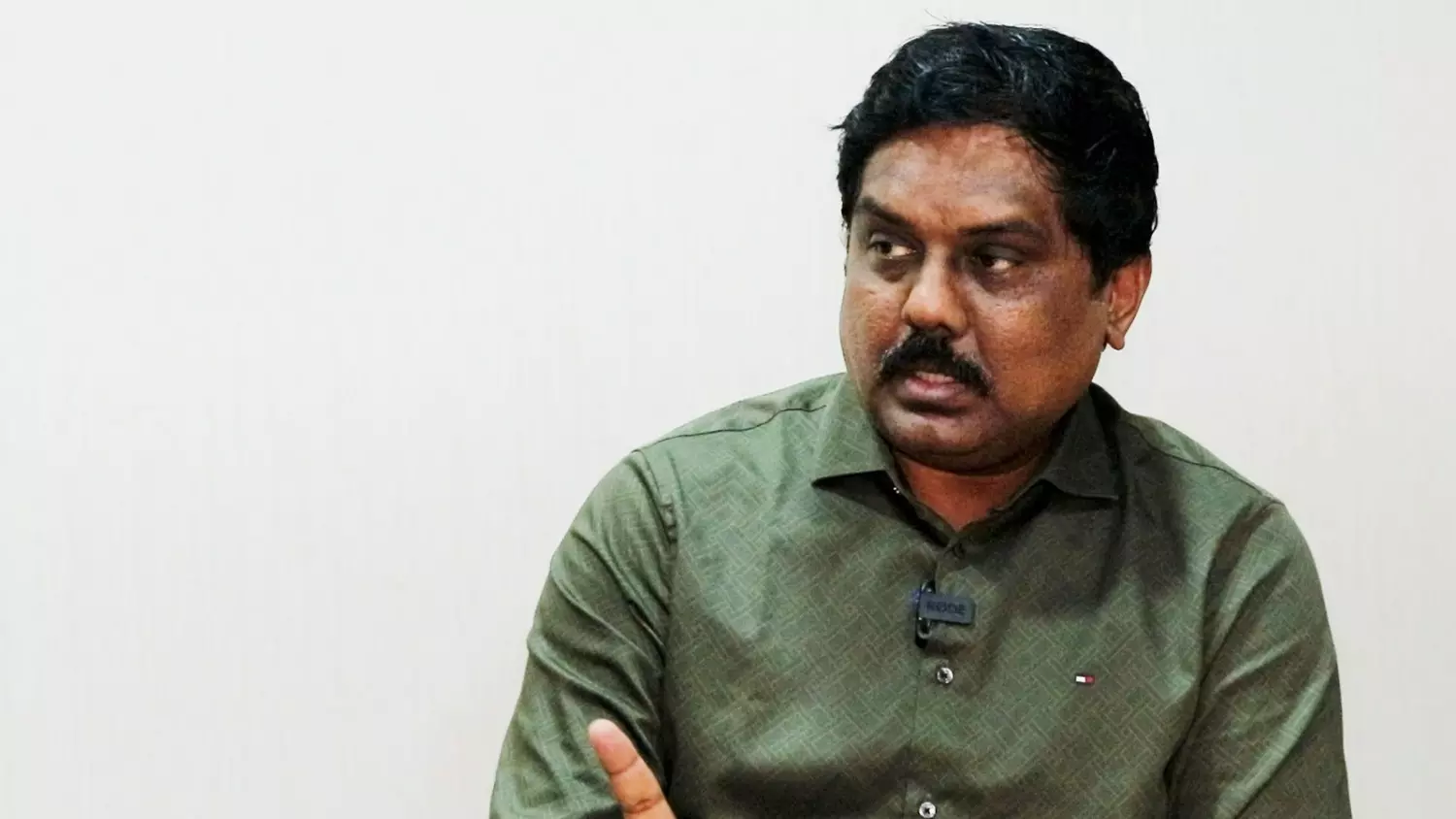
Parandur airport: Environmentalist explains why Ekanapuram was excluded from talks
As Parandur airport project speeds ahead with rapid land deals, environmentalist G Sundarrajan questions exclusion of key villages and hints at deeper power plays behind the push

For over 1,000 days, residents of Ekanapuram near Chennai have been protesting against the proposed Greenfield airport at Parandur. While the state claims progress with initial land acquisitions, tensions remain high, especially with Ekanapuram villagers excluded from key negotiations. Environmentalist and Poovulagin Nanbargal coordinator G Sundarrajan explains why the project faces resistance and what’s really happening on the ground.
Ekanapuram, which owns a significant part of the proposed project land, was excluded from the July 16 negotiation meeting. Do you think this was a deliberate move?
The government seems to believe that if they buy up the land surrounding Ekanapuram, they can pressure the villagers into leaving. It’s a form of psychological coercion. What’s more troubling is the recent government order (G.O.) that falsely claims prices were fixed after discussions, including with Ekanapuram residents. But not a single discussion took place with the people of Ekanapuram. They were never consulted.
The government appears to be sending a message — “we’ve acquired other lands, so you’re next.” It’s a strategy to isolate and break the resistance from Ekanapuram.
Also read: Why is Parandur airport disaster in waiting? Interview with aviation expert Captain Mohan Ranganatha
There’s also talk that the land acquired so far came from non-farming landowners who had moved away years ago. Was the announcement of this acquisition and compensation intended to taunt the protesters?
Yes, that seems likely. The government announced a compensation package combining land cost and other benefits. They thought landowners would gladly surrender their land. For most, the compensation comes to around Rs 35 lakhs per acre, despite promises of three times the market value. Only a handful, those with plots near the main road, will get around Rs 1 to Rs 2 crore.
Before the G.O. was issued, four or five villages — especially those losing homes and land — were protesting actively. Others were relatively passive. But after the announcement, all villages united and outright rejected the compensation. To counter this, the Kanchipuram district collector orchestrated a pre-planned acquisition from people who had either abandoned the village decades ago or were outside buyers. That’s how they managed to claim the acquisition of 17.5 acres from 19 individuals.
Also read: Parandur airport: Activist cites environmental concerns, suggests other options
There’s a narrative being circulated that farmers are actually open to selling their land — they just want more compensation. How true is that? Who is pushing this?
This entire project is being driven by speculative real estate interests — people who have already bought land around Parandur. These could be politicians, bureaucrats, or others. They are crafting the narrative that the second airport is essential for Tamil Nadu’s growth. It's the same centralising logic we hear with “one nation, one election” — now it's “one airport.”
Also read: Vijay to throw his weight behind farmers, oppose Parandur airport
Protest leader Subramani has alleged large-scale lobbying, with construction firms and bureaucrats acquiring nearby land. He even released documents showing land purchases by a company called DJ Builders. What’s your take?
Subramani has uncovered land documents showing that around 250 acres were bought in the name of DJ Builders and the promoter's son. These purchases were made within the past few years. The bigger question is — on whose behalf were these transactions done?
We demand a government inquiry into all land dealings within a 5-6 km radius of the proposed Parandur airport over the last five years. Only then will the truth come out. Would such a project ever be approved in a minister’s native village? Would any leader allow their rural hometown to be razed for an industrial park?
Tamil Nadu has not witnessed such large-scale displacement in decades. Imagine entire villages relocating, people packing up their lives in Tata Ace vehicles and moving away. It’s unprecedented. Shouldn’t the government show more empathy and concern for these people?
What’s your view on the Tamil Nadu government’s ‘Ungaludan Stalin’ outreach programme?
On paper, ‘Ungaludan Stalin’ is a commendable initiative — bringing governance to people’s doorsteps. But the real question is: is it reaching the right places?
In places like Parandur — and across Tamil Nadu — there are ongoing issues like illegal quarries and displacement. Is the state machinery truly visiting these affected areas and listening to the people? That’s a question the government must answer.
TVK leader and actor Vijay visited the protesters and said he would lead them to the secretariat if the chief minister didn’t meet them. What do you make of this development?
The protestors are encouraged by the support from Vijay and his party. If the chief minister is serious about engagement, he should respond and meet with them. This is our request.
We also hope that all political parties recognise the importance of the environment and prioritise it in their agendas. This is not just about Parandur — it’s about how we envision development and whose voices matter in that process.
(The content above has been generated using a fine-tuned AI model. To ensure accuracy, quality, and editorial integrity, we employ a Human-In-The-Loop (HITL) process. While AI assists in creating the initial draft, our experienced editorial team carefully reviews, edits, and refines the content before publication. At The Federal, we combine the efficiency of AI with the expertise of human editors to deliver reliable and insightful journalism.)

